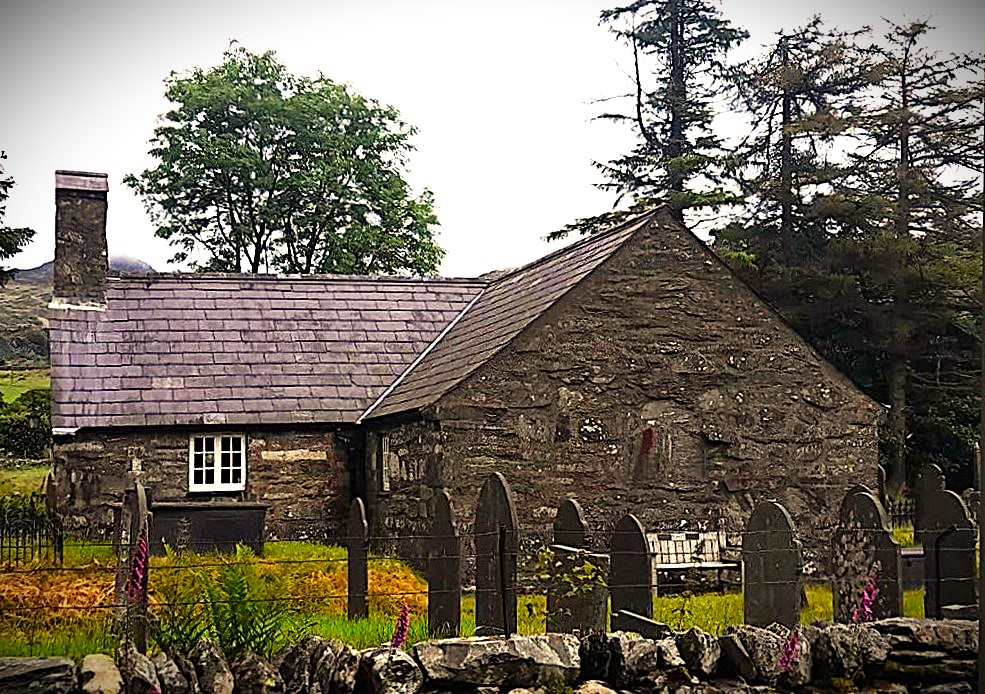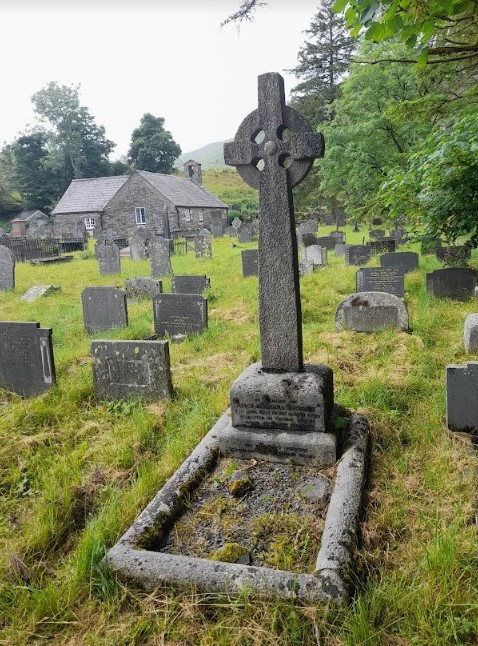600 year church set for major restoration project

Dale Spridgeon, local democracy reporter
A 600-year-old church, which is one of the smallest churches in Wales, is set for a major restoration.
St Julitta’s, which has links to aristocrats, artists and mountaineers, is thought to have been constructed in the late 15th or early 16th century.
The Friends of St Julitta’s have been granted permission by Eryri National Park Authority’s planning committee to restore the historic building’s floor.
Now deconsecrated it is cared for by the Friends – a voluntary conservation and local history group.
The Grade II* listed church was originally known as Curig’s Chapel, although a larger building was opened in 1883 in the village and took the name of St Curig’s.
Sixth century
St Curig is thought to have lived in the sixth century and was known as Curig Lwyd (Curig the Blessed) or Curig Farchog (Curig the Knight), the History Points website notes.
Of St Julitta’s, planning documents state there was “historical evidence that Capel Curig was built around 1540, under the patronage of Sir Rees Griffiths of Penrhyn, whose sister Margaret and her husband leased the farm of Gelli Mynach on which the chapel of ease was built’.
The chapel is situated immediately west of the A4086, Capel Curig to Caernarfon road, near the Plas Y Brenin National Outdoors Centre.
It was restored in 1776, then extensively renovated at the expense of the local landowner George Hay Dawkins-Pennant, of Penrhyn Castle in 1839.
It is thought likely that the Penrhyn slate slab floor dates from this restoration period.
Box pews were also introduced in the 1839 restoration, but may have been recycled.
The chapel is also well known for being part of a famous view of Eryri from Capel Curig and has regularly featured in paintings and photographs over the years.
The Friends have been granted permission to expose the old slate floor beneath modern concrete paving stones inside the church.
The approved work will include lifting, removal and disposal of the old 1960s floor which comprises of approximately of 160 flagstones.
It will also see work on two edge stones to the raised altar, the sweeping and removal of underlying loose screed in a bit to expose the underlying mid-19th century slate floor.
The aim, the Friends say, is to “enhance the character and appearance of church”.
Slate floor
Work will see the restoration of the underneath slate floor using matching Penrhyn slab slates.
“We will then restore the box pews on a wooden frame with floorboards, as they were originally,” they note.
Assessments will also be made of the condition of the underlying area of slate flooring, with the plans saying they will “review ongoing options for repair and restoration”.
It would also help enable the detailed planning of repairs or restoration of the floor and box pews.
The plans say the group wanted to remove the “inappropriate” 1960s concrete paving slab floor which “seriously damages the historic and aesthetic appearance of the church interior”.
Before a planning application was submitted to the Park planners, a community consultation was undertaken.
The matter was discussed at a Capel Curig Community Council meeting, who were in favour of the work, the plans say.

St Julitta’s graveyard is famously known as the resting place of artist Lady Alice Douglas Pennant, born in 1862.
She was the daughter of Lord Penrhyn, George Douglas-Pennant (1836-1907) of Penrhyn Castle, and catalogued the castle’s art collection.
The History Points website notes: “Having grown up surrounded by the work of artists such as Rembrandt and Canaletto she became a watercolourist.”
It also attributes her to a sad love story.
“It’s believed that as a teenager she fell in love with one of the gardeners and was confined to a room in the castle by her disapproving father,” the website states.
“While there, she may have been responsible for an Italian message scratched onto a window pane: ‘Essere amato amando’.
“This was later translated as meaning: “To be loved while loving,” it stated.
She never married, and died in London in March 1939 and was buried in Capel Curig.
Her epitaph reads: “She faithfully defended the ancient church in Wales.”
Other graves include those of two friends who were buried side by side.
Falling
Alfred Samuel James Bradford, 26, and Edward Godfrey Leeke Latham, 24, both died in 1937 after falling when roped together in an attempt to climb the Idwal Slabs.
Another grave is that of artist Alfred Oliver, who died in 1944.
He was originally from Nottingham and had a studio in Capel Curig and was known for his painting of Eryri and Yr Wyddfa. He died on January 29, 1944, aged 76 years.
His son Thomas Alfred Oliver, who was an RAF pilot who was shot down and killed by a German plane in France, on August 14, 1917, is also memorialised there.
He features in the Imperial War Museum’s Lives of the First World War stories.
Leonard Spencer Salt, born on 15 July 1869, was also laid to rest at St Julitta’s.
He was a partner in his family’s brewing business, Thomas Salt & Company of Burton on Trent. He died in 1910 after a climbing accident on the southern flanks of Yr Wyddfa.
The History Points website notes that his tombstone reads: “A tribute of affection by many sorrowing friends, and the workmen of his firm.”
Another mountaineer is Edmund Wigram, born in 1911. He took part in the 1935 expedition to survey proposed routes for the first ascent of Everest.
He died in hospital in Bangor after he slipped and fell while climbing with his wife, on the Idwal Slabs in December, 1945.
His wife Kit’s ashes were also interred there after her death in 1998.
Concerned about the future of the old church, local residents Jill Tunstall and Harvey Lloyd, formed the friends group as a registered charity in 1998.
Since then, work has been underway to preserve the church and regular work parties look after the churchyard.
You can visit the Friends of St Julitta’s website here.
Support our Nation today
For the price of a cup of coffee a month you can help us create an independent, not-for-profit, national news service for the people of Wales, by the people of Wales.







That interesting but bitter sweet tale reminded me of a memorial to a fallen climber by the side of Llyn Bodlyn from the time of the first world war. He may have been home on leave, very sad…
I wonder, is this the church where they painted over the painting of Arthur and his knights sailing to America on their Galleon Called Prydwen? The one with the meteor also in the background!
A saintly connection to Tintagel…interesting, I shall be passing in a few days, I will stop and pay my respects…
Last time I went, the key was kept in one of the shops a short walk away, I presume it still is. It’s a pretty church, enjoy.
One wonders why it was called St Julitta’s at all when it was already dedicated to St Curig.